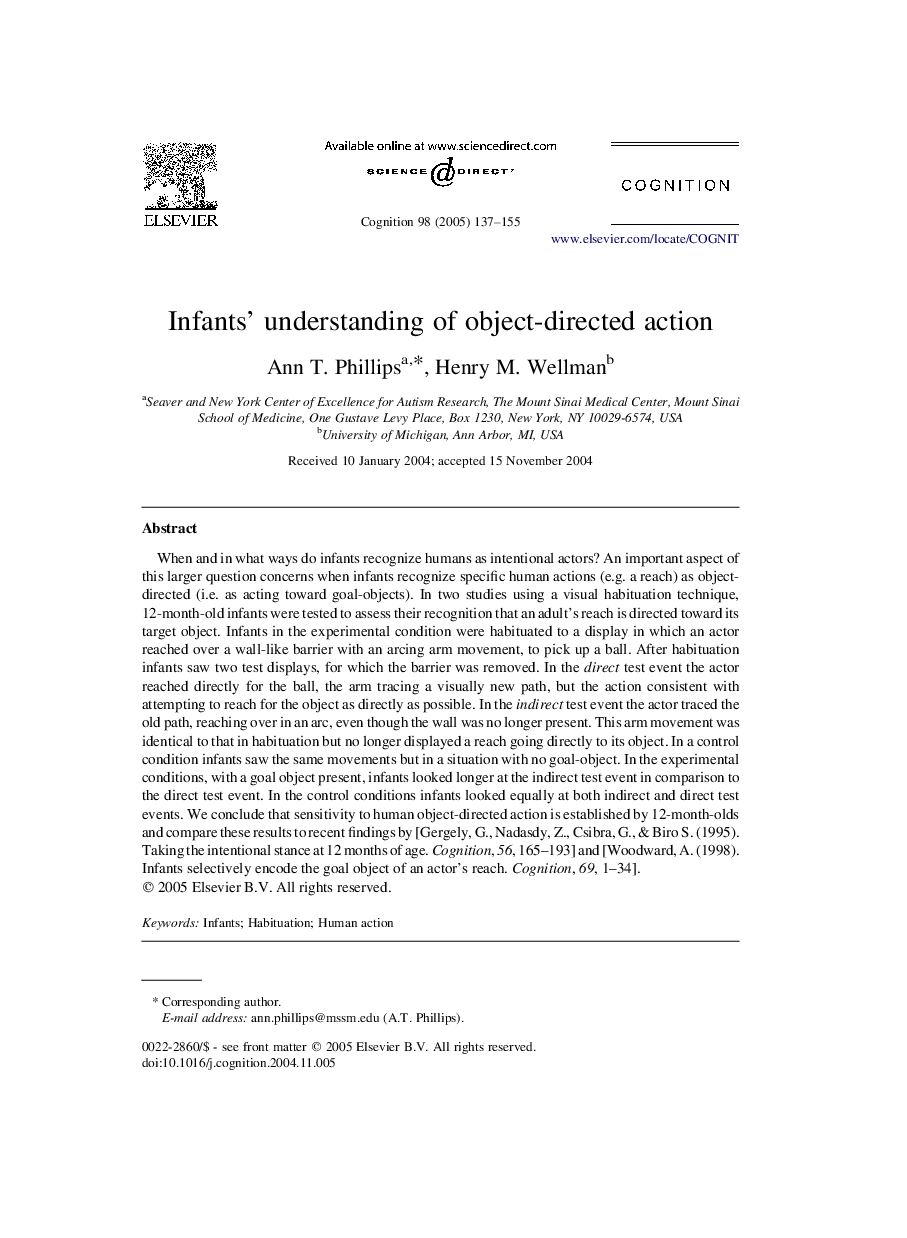| Article ID | Journal | Published Year | Pages | File Type |
|---|---|---|---|---|
| 10458126 | Cognition | 2005 | 19 Pages |
Abstract
When and in what ways do infants recognize humans as intentional actors? An important aspect of this larger question concerns when infants recognize specific human actions (e.g. a reach) as object-directed (i.e. as acting toward goal-objects). In two studies using a visual habituation technique, 12-month-old infants were tested to assess their recognition that an adult's reach is directed toward its target object. Infants in the experimental condition were habituated to a display in which an actor reached over a wall-like barrier with an arcing arm movement, to pick up a ball. After habituation infants saw two test displays, for which the barrier was removed. In the direct test event the actor reached directly for the ball, the arm tracing a visually new path, but the action consistent with attempting to reach for the object as directly as possible. In the indirect test event the actor traced the old path, reaching over in an arc, even though the wall was no longer present. This arm movement was identical to that in habituation but no longer displayed a reach going directly to its object. In a control condition infants saw the same movements but in a situation with no goal-object. In the experimental conditions, with a goal object present, infants looked longer at the indirect test event in comparison to the direct test event. In the control conditions infants looked equally at both indirect and direct test events. We conclude that sensitivity to human object-directed action is established by 12-month-olds and compare these results to recent findings by [Gergely, G., Nadasdy, Z., Csibra, G., & Biro S. (1995). Taking the intentional stance at 12 months of age. Cognition, 56, 165-193] and [Woodward, A. (1998). Infants selectively encode the goal object of an actor's reach. Cognition, 69, 1-34].
Keywords
Related Topics
Life Sciences
Neuroscience
Cognitive Neuroscience
Authors
Ann T. Phillips, Henry M. Wellman,
